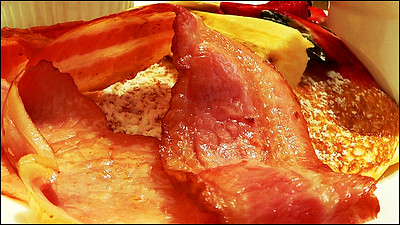Why is a large amount of milk discarded due to the pandemic of the new coronavirus?

Due to the pandemic of the new coronavirus infectious disease (COVID-19), measures such as urban blockade have been implemented in each country. Due to this effect, the US news media Vox reports that there is a problem that 'a large amount of milk is discarded' in the United States.
The 2 mile (about 3.6 km) train line in South Florida...

To reach a
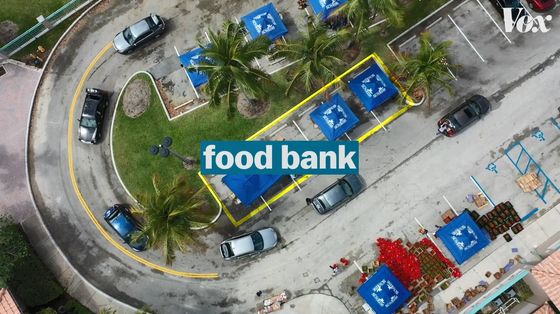
Food bank groups across the United States believe that the pandemic of COVID-19 has significantly increased the number of people in need of reliance on food banks. People who lost their jobs due to leave or bankruptcy due to COVID-19 also seem to have difficulty getting daily food.
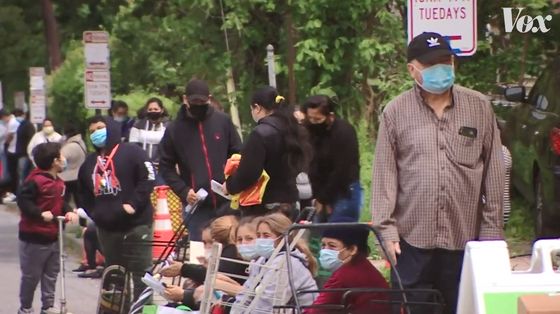
However, different economic impacts are occurring at food production sites.
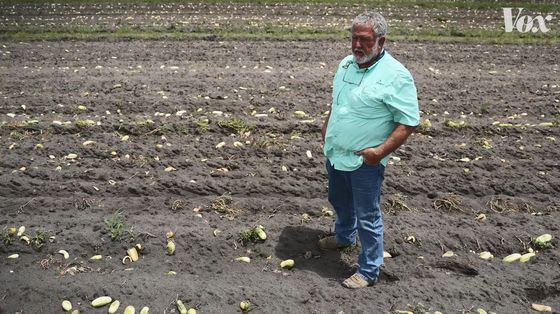
Many farmers have a surplus of food, and a large amount of food is discarded as it is...
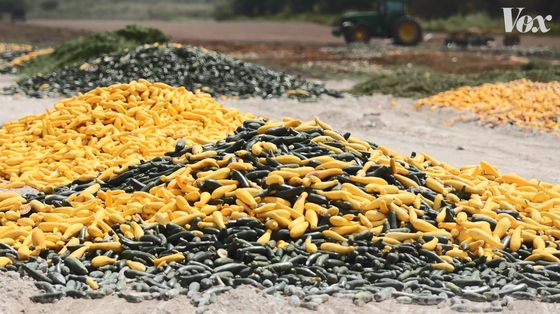
Dairymen are forced to discard millions of gallons (millions of liters) of milk.
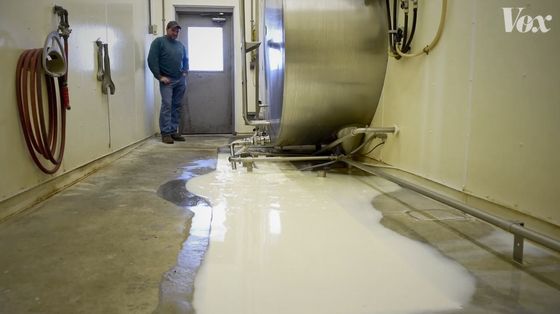
This problem is due to the disruption of the supply chain.
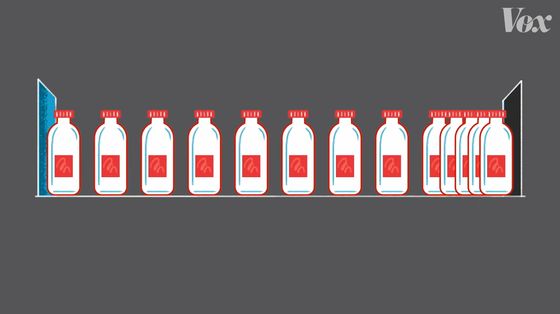
This is a simplified diagram of the milk supply chain.
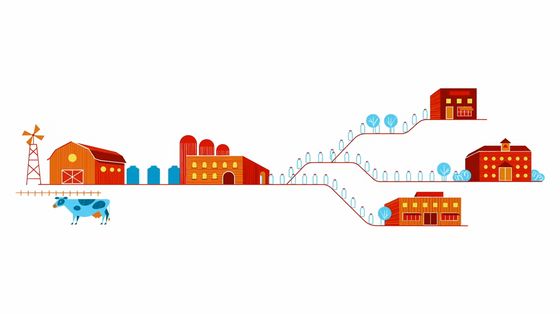
First of all, a dairy farm squeezes milk from dairy cows and fills it into a tank...
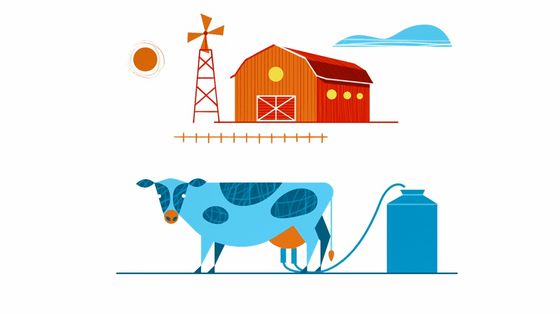
The tank is sent to the processor.

Processors produce pasteurized milk, cheese, yogurt, butter and other dairy products.

Dairy products are packaged and placed in grocery stores and elsewhere.
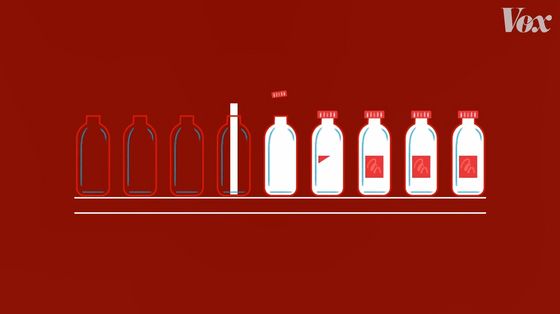
However, supermarkets and grocery stores, where many consumers buy dairy products, are just one of the final destinations for products.
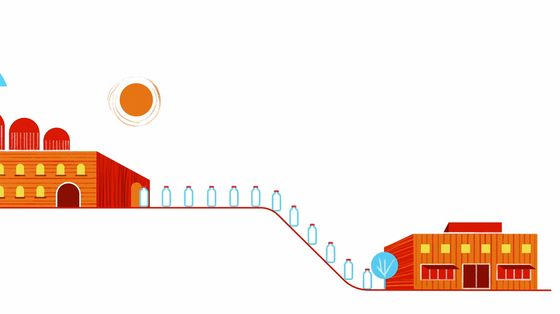
About half of all products are delivered to restaurants, restaurants such as coffee chains, and schools.
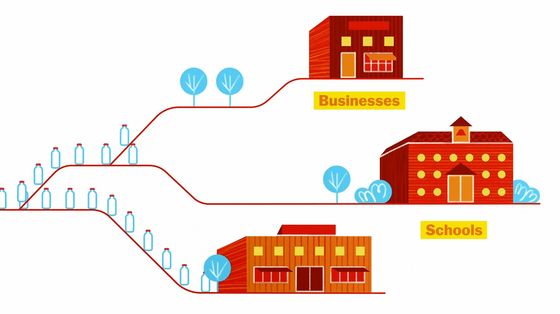
The supply chain is highly streamlined, and dairy products are shipped in packages suitable for their respective destinations. However, due to the influence of the new coronavirus, this supply chain is beginning to collapse.
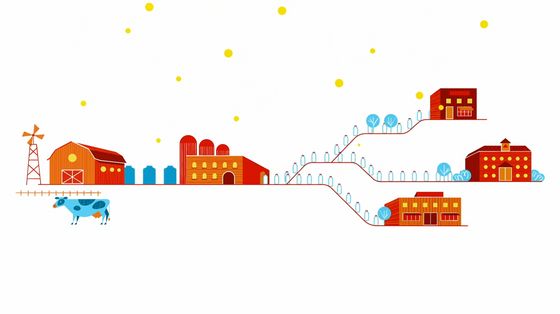
With the closure of restaurants and schools, the primary destination for dairy products has disappeared, but we cannot stop milking dairy cows. Although there was an oversupply due to a significant decrease in demand, it seems that it is not possible to easily sell the excess to restaurants as the packaging and distribution are optimized for each shipping destination.
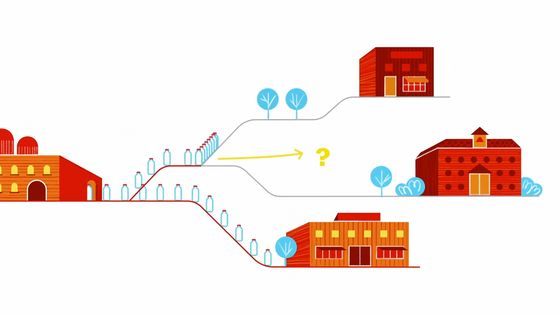
Carrie Mess, a dairy farmer in Wisconsin, is trying various methods with the intention of 'delivering food to people who need it', but he is changing the supply chain that is specialized for each shipping destination. It's not easy.

Differences between shipping destinations such as grocery stores, restaurants, and school lunches are reflected in the appearance after packaging and the quantity of products.
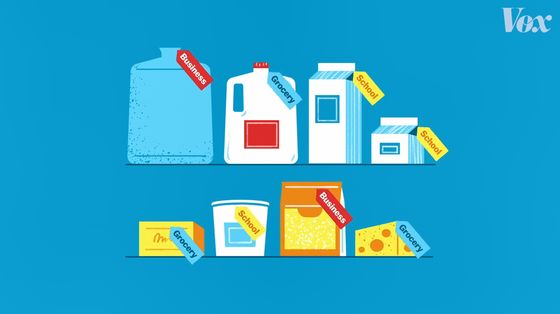
Dairy products for school meals, for example, could be milk in small paper packs for children or giant cheese bags for school catering companies.
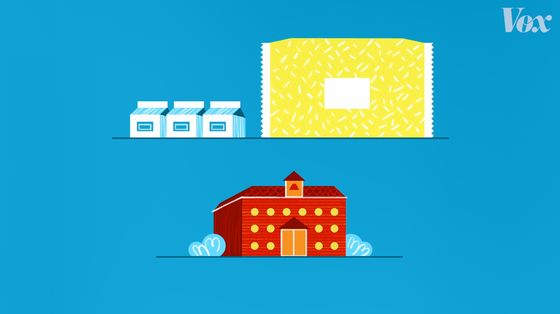
On the other hand, when it comes to restaurants, it is packaged in a huge container of 5 gallons (about 19 liters) or a huge cheese block of 40 pounds (about 18 kg).
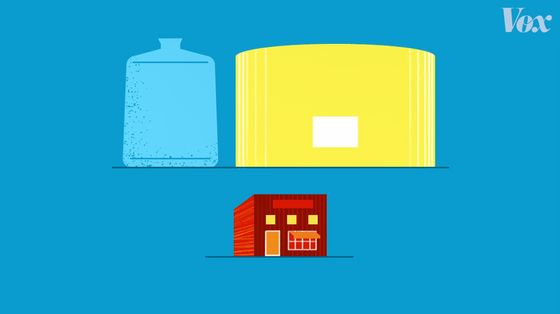
It is completely different from the dairy products sold at ordinary restaurants.
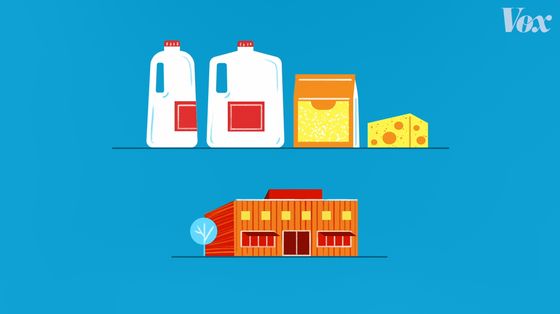
There is no package for a processor that specializes in specific shipping destinations to switch shipping destinations immediately...
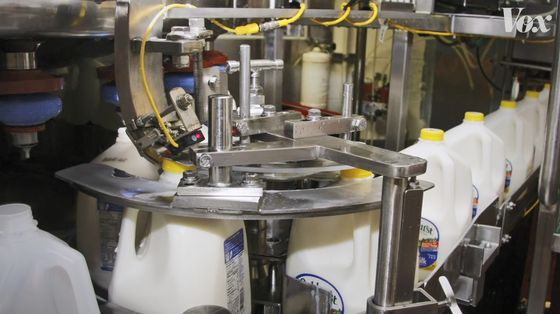
In order to cut a huge cheese block into a size that is easy for consumers to handle, a new machine that costs several million dollars (about several hundred million yen) must be introduced.
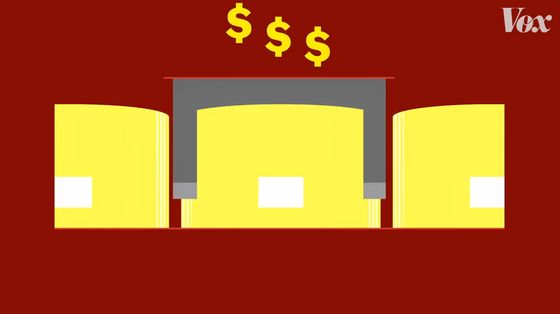
Garnett Luthens, a dairy farmer in Minnesota, said dairy products for school lunches are produced in dedicated plants. Even if you arrange containers of different sizes at grocery stores or deliver them to homes, ordinary homes do not have a refrigerator to store them.
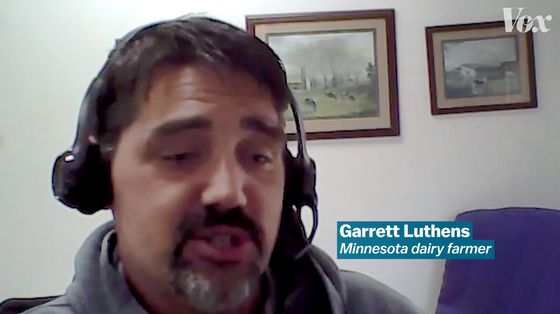
Mess says he's switching packages as soon as possible, but he says, 'This is unprecedented.'

There are cases where surplus products are sent to the food bank, but it seems that there are not enough personnel to adequately store dairy products in huge containers and to distribute perishable products.
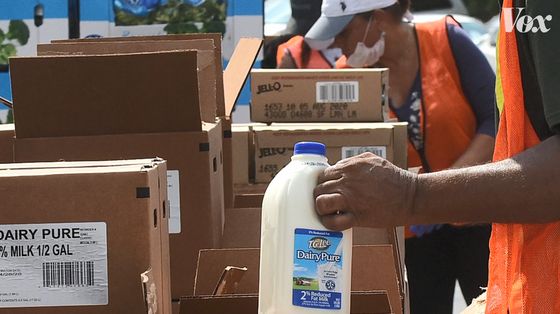
Also, even if all the surplus milk could be shipped to the grocery store, consumers in ordinary households alone cannot cover the demand for restaurants and school meals. As a result, it leads to an incredible amount of food waste.
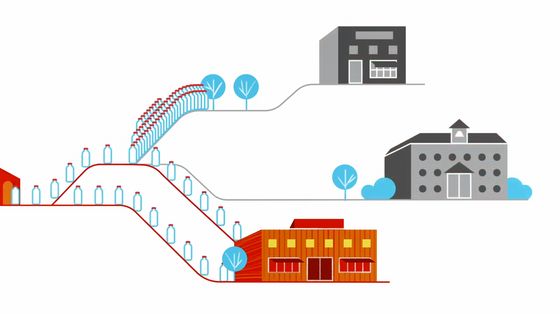
Joe Statz, a dairy farmer in Wisconsin, said he has been dumping milk since March 1, 2020, throwing away 42,000 gallons (about 159,000 liters) of milk per day.
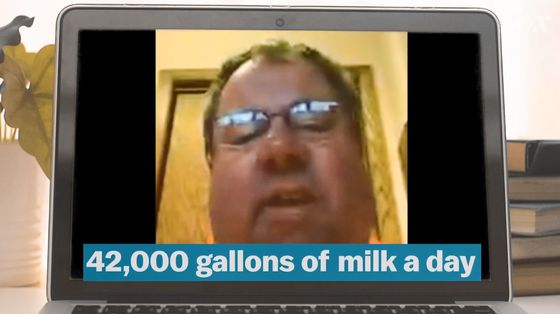
The impact of the new coronavirus has a great impact not only on the disposal but also on the price of milk itself. Since the start of the new coronavirus epidemic, the price of milk per 100 pounds (about 45 kg) has dropped sharply by nearly $ 4 (about 440 yen).
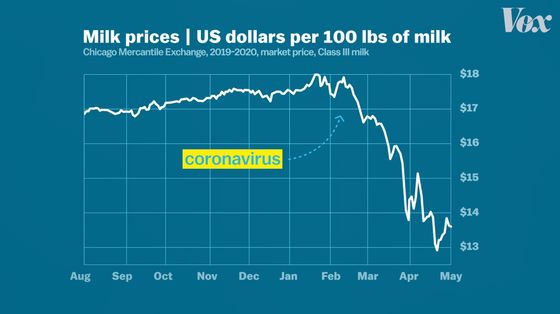
The milk that Statz ships is said to be less than half the price in the half year from December 2019 to June 2020, and Statz complains that it is very unprofitable.

Dennis Leonardi, a dairy farmer in California, produces 'organic milk,' which is expensive to produce and distribute, but is now as cheap as regular milk.

The dairy industry has been struggling with price cuts for a long time, and milk prices fell sharply around 2015. The epidemic of the new coronavirus was an immediate blow as milk prices gradually increased.
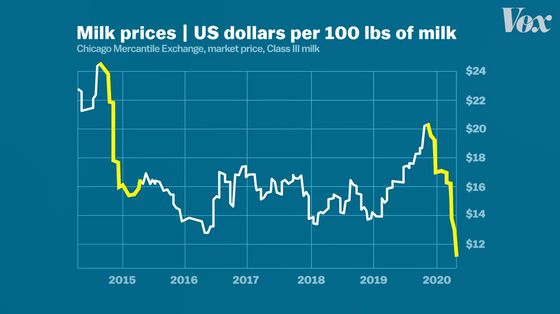
The fall was attributed to the fact that some companies started efficient production in very large factories, trade friction reduced dairy exports, and more people choosing milk alternatives. Is being watched
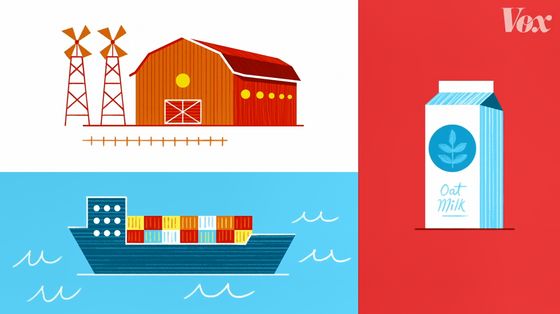
The number of dairy farmers, which had exceeded 45,000 in 2015, will decrease by 11,000 by 2019. It is calculated that as many as 9 dairy farmers are out of business per day, and this number may be accelerated by the new coronavirus epidemic.
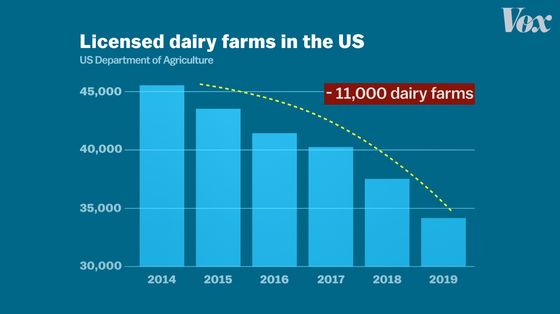
The dairy cooperatives are trying to overcome the crisis by sharing the burden among the participating dairy farmers and limiting the production quota.
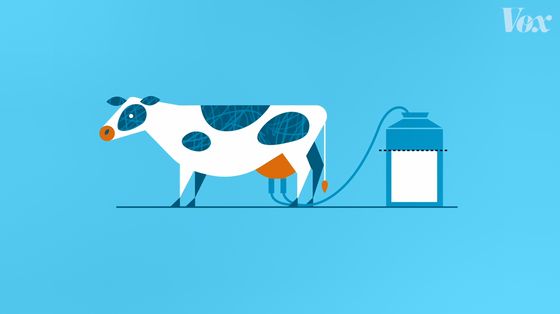
Economic hardship is expected to increase the number of dairy farmers who sell dairy cows or go out of business.
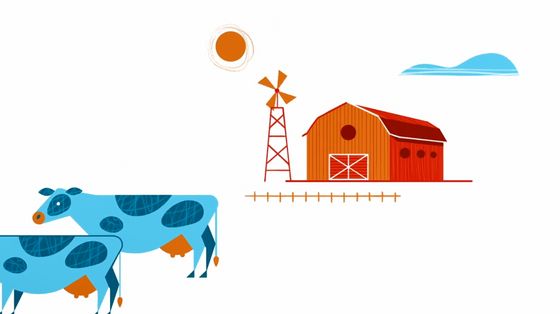
Statz also had to cut milk production by 10% and was forced to sell off milk.

The US government compensates for some of these losses...
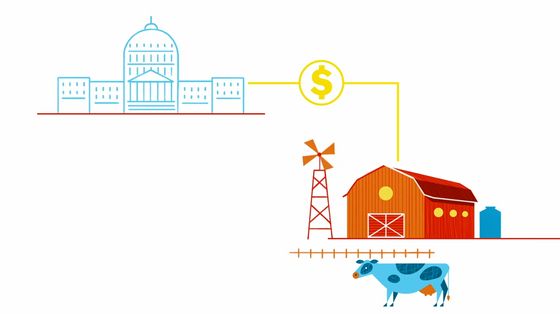
We are taking measures such as providing funds to supply surplus dairy products to food banks.
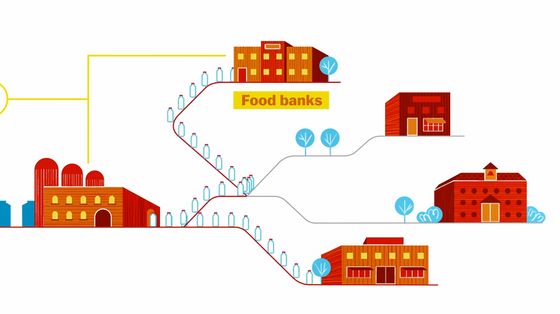
While this is an important step for dairymen to overcome the crisis, some have pointed out that it is the smaller dairymen who benefit, not the smaller dairymen.
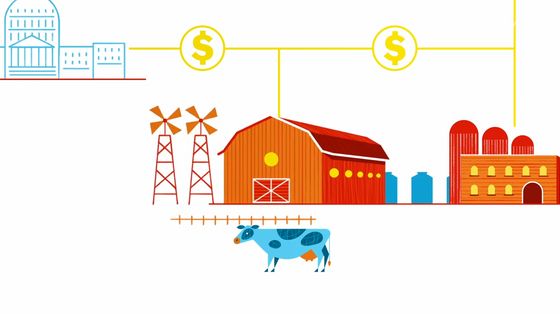
Dairy farmers face uncertainties and need better planning, Leonardi said.

Alternatively, lobbying activities such as appealing to the pizza chain to increase the amount of cheese used ...
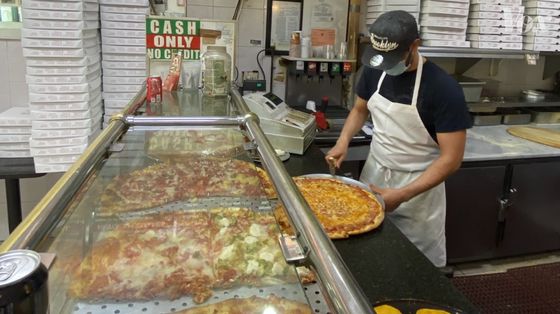
It is possible that the US government will set various restrictions to stabilize the supply price of dairy products.

Supply chain problems are not just for dairy products, but for many farmers who produce produce.

In addition, discarding the foods produced with great care is more costly than psychological. Mess complained that it was very painful to waste the produced food in vain.

Similar problems have occurred in Japan as well, such as platforms and sales associations that sell surplus food items in order to reduce food loss by business owners and producers who have inventory due to event cancellations and restaurant closures. Has also appeared.
Related Posts:






